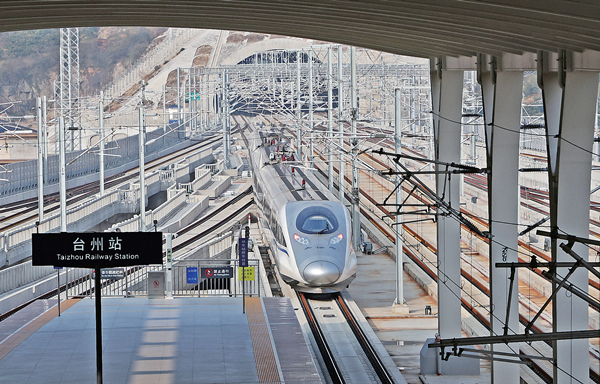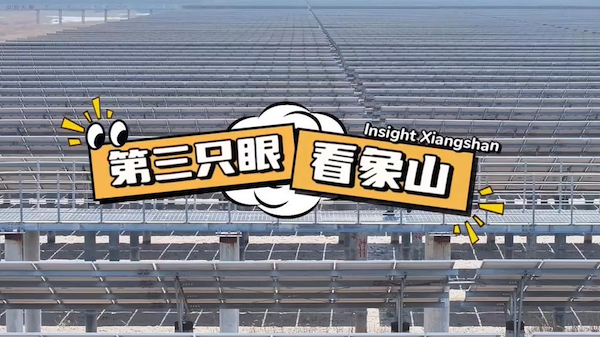High-speed railway welcomes private investment

A train running along the Hangzhou-Shaoxing-Taizhou intercity high-speed railway departs from Taizhou Railway Station in Taizhou, Zhejiang province, on the official opening day of the rail line in January. [Photo by Pan Kanjun/for China Daily]
New 266.9-km intercity line greatly shortens travel time between Zhejiang cities, further enhancing regional economy
China's first privately controlled high-speed railway in Zhejiang province will provide a promising example for private capital to invest in the nation's railway sector, experts said.
As the first high-speed railway largely funded by domestic private capital, the 266.9-kilometer Hangzhou-Shaoxing-Taizhou intercity high-speed railway greatly shortens travel time between cities in Zhejiang.
Construction of the railway began in December 2017. After four years of construction, the high-speed railway line officially opened on Jan 8.
The 44.9-billion-yuan ($7.1 billion) project is constructed via a Public-Private Partnership (PPP) model, with the private sector holding 51 percent.
A private consortium led by Fosun Group holds the 51 percent stake in the project, with the remaining funding coming from China Railway Development Fund (15 percent), Zhejiang Provincial Transportation Investment Group on behalf of the provincial government (13.6 percent), and funds of local governments of Shaoxing (10.2 percent) and Taizhou (10.2 percent), according to public information.
"This is the very first high-speed railway mainly funded by private capital. It sets a successful and replicable example for private capital entering into railway investment and construction, and it also provides important experience for diversifying railway investment," said Yang Xiuzhi, a senior engineer with China Railway Shanghai Group Co Ltd.
As PPP has entered into a new stage of standardized, orderly and rational development, the project presents a role model for future reform and replication, experts said.
A guideline on public service during the 14th Five-Year Plan period (2021-25) was issued by the National Development and Reform Commission early in January, in which PPP projects were encouraged as one of the methods to entice more social entities to invest in public services.
Targeting improved policies, fewer restrictions and promotion of fairness, the nation is set to provide higher-quality services to improve people's livelihoods.
Data from the national PPP information platform showed a total of 403 projects were added into the database throughout 2021, among which 149 were related to urban infrastructure.
"Global experience has proved that railway lines funded with diversified capital sources have great outlooks," said Sun Zhang, a professor specializing in railway and urban rail transit research at Tongji University in Shanghai.
"Building railway lines funded by multiple parties will become much more efficient and possible than those invested by one company alone," Sun added.
"Construction and operation of the Hangzhou-Shaoxing-Taizhou railway line are included into the whole network of the national railway. As the capital provider, private enterprises are treated equally with State-owned high-speed railway investors," said Fang Jianhong, CEO of Fosun Infrastructure Group, who is also the president of Hang-Shao-Tai Railway Co Ltd.
"The only difference is the reform and innovation in investment and financing," Fang said.

 China welcomes global travelers with open arms
China welcomes global travelers with open arms  Badminton excitement builds in Ningbo city
Badminton excitement builds in Ningbo city  A green revolution in Ningbo's tidal flats
A green revolution in Ningbo's tidal flats 


